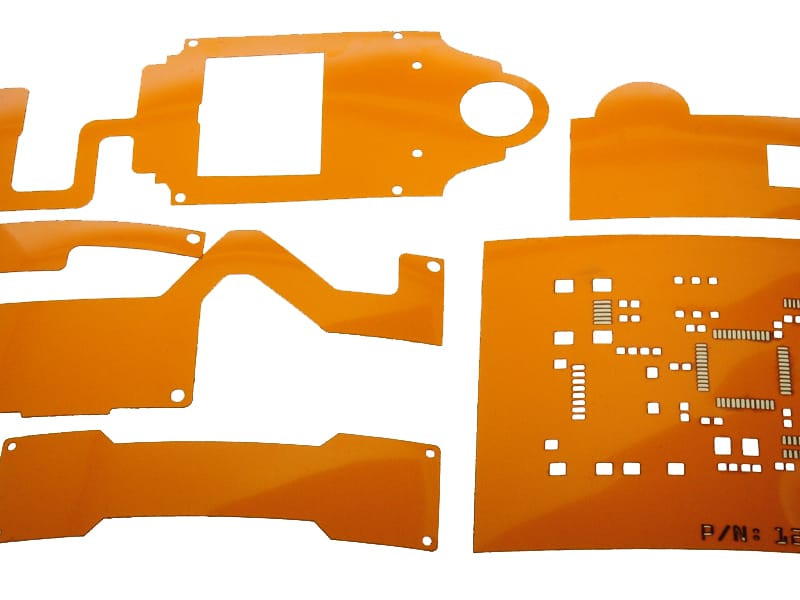Processing Kapton® Polyimide Using DLMP®

Related Names: |
Kapton® FN, Kapton® HN, Kapton® HPP-ST, Polyimide Film |
Chemical Names: |
poly-oxydiphenylene-pyromellitimide |
Manufacturers: |
DuPont™ |
Kapton® is the brand name of DuPont™ polyimide films. Polyimide films are usually thermosetting polymers synthesized by polymerizing an aromatic dianhydride and an aromatic diamine. Kapton films exhibit good chemical resistance, high dielectric strength, and excellent mechanical properties. These desirable qualities hold over a very wide temperature range. These films can be filled, metallized, and coated with adhesive, increasing their utility in more applications and industries. Untreated polyimide films are usually amber in appearance. Among the types of Kapton film available from DuPont, HN, FN, and HPP-ST are the most popular:
1. Kapton® HN – all polyimide film with a desirable balance of physical, chemical, and electrical properties over a wide temperature range, especially very high temperatures
2. Kapton® FN – a heat sealable grade created by combining Kapton HN with DuPont™ Teflon® FEP fluorocarbon resin
3. Kapton® HPP-ST – the same polyimide as HN with superior dimensional stability and adhesion characteristics over a wide temperature range
Kapton® and DLMP® Technology
The thermoset chemistry and high temperature resistance of Kapton make it highly compatible with DLMP® (Digital Laser Material Processing) technology. The influence that each of Kapton's properties has on the results of DLMP is discussed in detail in the following sections.
The most useful effects of laser energy with Kapton is material ablation and material modification. Each of these processes are discussed in their respective section below.
For more information see our Laser Material Processing Whitepaper.
Ablation of Material
Polyimides are excellent absorbers of CO2 laser energy (wavelength=10.6 μm). When the polymer absorbs laser energy, it rapidly converts optical energy into molecular vibrations (heat). Sufficient heat leads to rapid chemical decomposition and carbonization. Material directly in the laser path is ablated away into vapor and fine particles. The material just outside of the laser's spot or path will conduct some heat, but not enough for complete and thorough combustion and ablation. This area of thermal affect is often referred to as the heat affected zone or HAZ. The HAZ for polyimide films will be black and carbonized. It may also exhibit a very light residue. The best way to remove this black char and residue is to submerge the film in an ultrasonic bath with a common solvent, such as methanol. Alternatively, the material can be wiped with a solvent swab.
Material Modification
When using DLMP technology to cut material, enough energy is applied to vaporize all of the material directly in the laser path. This leaves a dark residue and is caused by chemical decomposition as previously discussed. By reducing the laser power, polyimide film can be darkened without substantial material removal. This is a type of material modification and is useful for laser marking Kapton products.
Laser Marking
When the laser energy is used to produce a human- and/or machine-readable identification or information on a material, such as a barcode, date/lot code, serial number or part number, the process is considered laser marking. Laser marking polyimide film will yield a grey mark once excess char is removed.
Combined Processes
Environmental, Health and Safety Considerations
Laser material interactions almost always create gaseous effluent and/or particles. Processing all-polyimide Kapton (Cirlex®, H type) with a CO2 laser generates vapors primarily containing carbon monoxide with trace amounts of carbonyl, nitrile, and alkyne groups. The solid black residue deposited during cutting and marking are likely generated by the complete carbonization of the polymer. The effluent from processing Kapton polyimide film should be routed to the exterior environment. Alternatively, it may be treated with a filtration system first and then routed to an exterior environment. Polyimides do not readily combust. However, laser processing should always be supervised.







